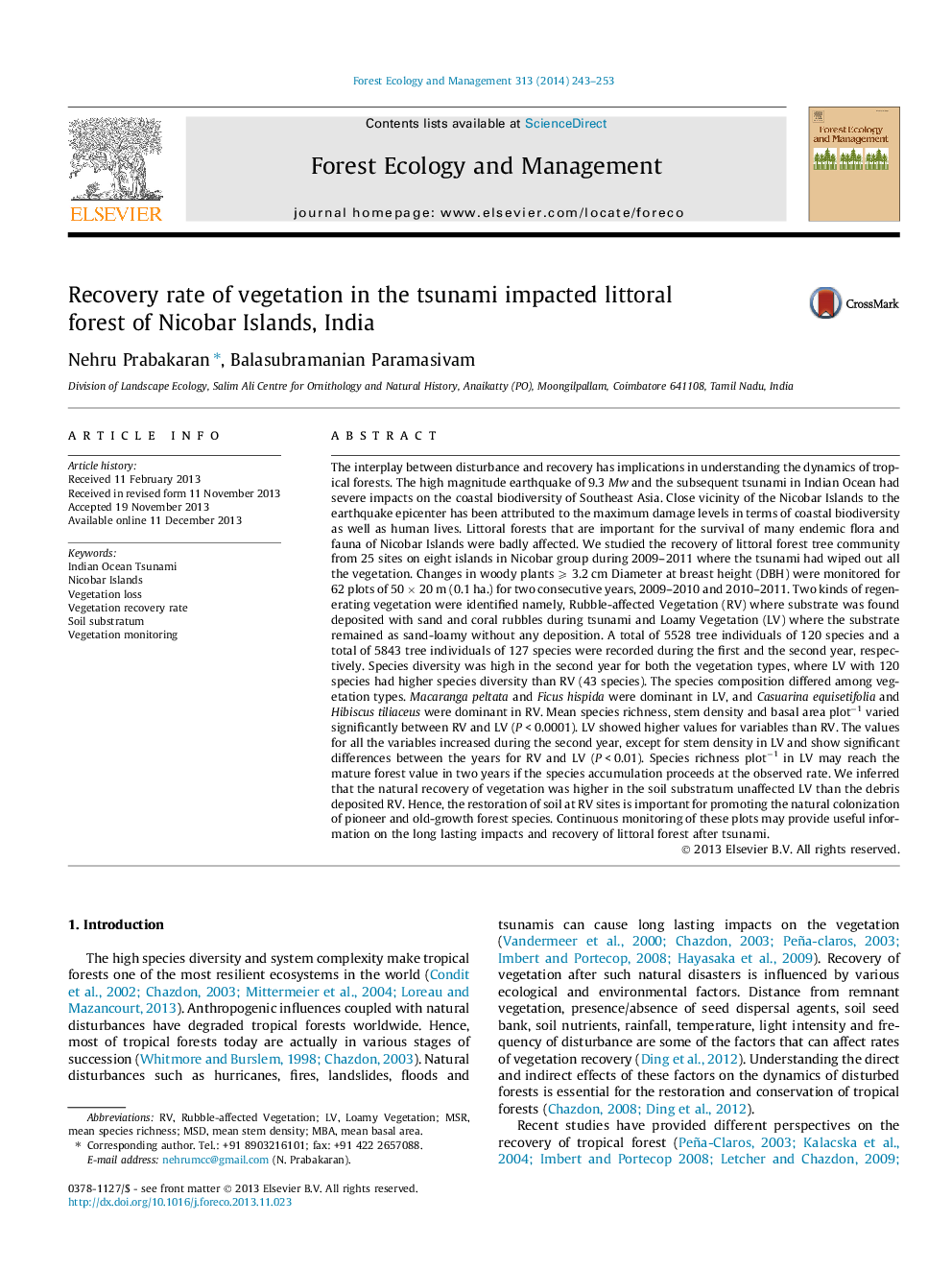| کد مقاله | کد نشریه | سال انتشار | مقاله انگلیسی | نسخه تمام متن |
|---|---|---|---|---|
| 86599 | 159199 | 2014 | 11 صفحه PDF | دانلود رایگان |
• Indian Ocean Tsunami resulted in loss of coastal vegetation in Nicobar Islands.
• Natural recovery of coastal forest after tsunami was studied.
• Disturbance in soil substratum had influenced the vegetation recovery.
• Unaffected soil sites showed faster vegetation recovery than sand deposited sites.
• Prevalence of self thinning process in the unaffected soil sites.
The interplay between disturbance and recovery has implications in understanding the dynamics of tropical forests. The high magnitude earthquake of 9.3 Mw and the subsequent tsunami in Indian Ocean had severe impacts on the coastal biodiversity of Southeast Asia. Close vicinity of the Nicobar Islands to the earthquake epicenter has been attributed to the maximum damage levels in terms of coastal biodiversity as well as human lives. Littoral forests that are important for the survival of many endemic flora and fauna of Nicobar Islands were badly affected. We studied the recovery of littoral forest tree community from 25 sites on eight islands in Nicobar group during 2009–2011 where the tsunami had wiped out all the vegetation. Changes in woody plants ⩾ 3.2 cm Diameter at breast height (DBH) were monitored for 62 plots of 50 × 20 m (0.1 ha.) for two consecutive years, 2009–2010 and 2010–2011. Two kinds of regenerating vegetation were identified namely, Rubble-affected Vegetation (RV) where substrate was found deposited with sand and coral rubbles during tsunami and Loamy Vegetation (LV) where the substrate remained as sand-loamy without any deposition. A total of 5528 tree individuals of 120 species and a total of 5843 tree individuals of 127 species were recorded during the first and the second year, respectively. Species diversity was high in the second year for both the vegetation types, where LV with 120 species had higher species diversity than RV (43 species). The species composition differed among vegetation types. Macaranga peltata and Ficus hispida were dominant in LV, and Casuarina equisetifolia and Hibiscus tiliaceus were dominant in RV. Mean species richness, stem density and basal area plot−1 varied significantly between RV and LV (P < 0.0001). LV showed higher values for variables than RV. The values for all the variables increased during the second year, except for stem density in LV and show significant differences between the years for RV and LV (P < 0.01). Species richness plot−1 in LV may reach the mature forest value in two years if the species accumulation proceeds at the observed rate. We inferred that the natural recovery of vegetation was higher in the soil substratum unaffected LV than the debris deposited RV. Hence, the restoration of soil at RV sites is important for promoting the natural colonization of pioneer and old-growth forest species. Continuous monitoring of these plots may provide useful information on the long lasting impacts and recovery of littoral forest after tsunami.
Journal: Forest Ecology and Management - Volume 313, 1 February 2014, Pages 243–253
